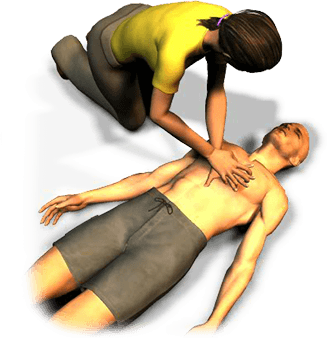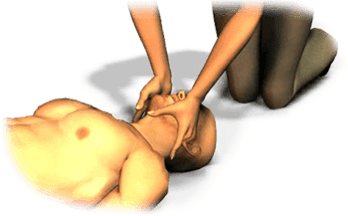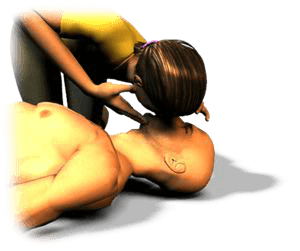Progress
Online CPR Certification | Perform Adult CPR
To give rescue breaths, start by opening the victim’s airway. This is done with the head tilt/chin lift. Place your hand on the victim’s forehead while gently lifting the victim's chin with 2 fingers from your other hand. While you can’t swallow your tongue, when unconscious it can fall to the back of the mouth and block the victim’s airway. Sometimes the head tilt/chin lift will cause spontaneous respirations.
IMPORTANT:
Be careful not to breathe with too much force or volume. This will cause abdominal distension. The victim’s abdomen will swell and make it difficult to ventilate.


